Addressing Teacher Shortage
American Falls High School (AFHS) students Echo Porath and Anna Hernandez scoured the bushes for litter while classmates raked brush and spread dirt piles at the Power County Hospital grounds.
Their class is part of a steadily growing AFHS agriculture program with a track record for brightening futures and bettering the community. Demand for agricultural curriculum is on the upswing in high schools nationwide — rural school districts have been expanding upon existing agricultural programs while urban districts have been launching them.
Finding qualified candidates to fill agriculture teacher openings has been the challenge. It’s a taxing job requiring intense dedication and long hours for relatively modest pay, which has contributed to an agriculture teacher shortage. The University of Idaho is uniquely positioned to address the shortage, producing most of Idaho’s pool of agriculture teachers, in addition to providing the support to keep them working in the field.
Many AFHS students have discovered careers through the agriculture program, which covers four pathways — mechanics and welding, leadership, animal sciences and plant sciences. Hernandez, a rising junior, signed up for a floral class and now aims to become an entomologist specializing in pollinators.
“I absolutely love working in the greenhouse and working with plants every single day,” Hernandez said.
Porath, also a rising junior, plans to head an agricultural classroom of her own someday.
“This is all stuff I’ve been very passionate about as I’ve learned about it, and I absolutely love spreading information agricultural classes have taught me, and I’d love to teach that to the younger generations,” Porath said.
The AFHS agriculture program started in 1990 and still had a single teacher — U of I graduate Marc Beitia, ’83 — as of 2017. U of I agricultural education graduates Bret Kindall, ’20, and Savannah Stroebel, ’22, are now part of the staff, and a fourth agriculture teacher who studied at U of I — Anthony Jefferies, ’23, will start this fall. AFHS agriculture course offerings have also expanded. For example, the school now offers seven plant sciences courses, compared with three courses just three years ago.
“Ag education is one of the most important things kids can learn in school. People need to eat and our population is growing, but the amount of people working in the agriculture industry is decreasing,” Stroebel said. “Even having students know what goes into putting food on their plate is important because then they can share that with other people.”
According to the National Association of Agricultural Educators (NAAE), there were 1,179 agriculture teacher positions waiting to be filled nationwide as of 2022, and the average starting salary of an agriculture teacher in the U.S. was $43,651.
U of I offers Idaho’s only agricultural education program, with both bachelor’s and master’s degrees to prepare future sixth through 12th grade agriculture teachers.
The bachelor’s program provides hands-on learning opportunities with local teachers — including student teaching in Idaho, Montana, Washington, Oregon, California or Alaska — and at on-campus animal centers, greenhouses and plant science farms. Students learn teaching methods, curriculum planning, classroom management and how to supervise out-of-classroom learning programs.
The 30-credit master’s program is research-based, requiring a thesis or practical project for a real-world client. It’s ideal for candidates who have completed a bachelor’s degree in agriculture or a related field and are considering an education- or research-based career. Salaries for graduates range from $59,000 at the entry level to $157,000 at the senior level.
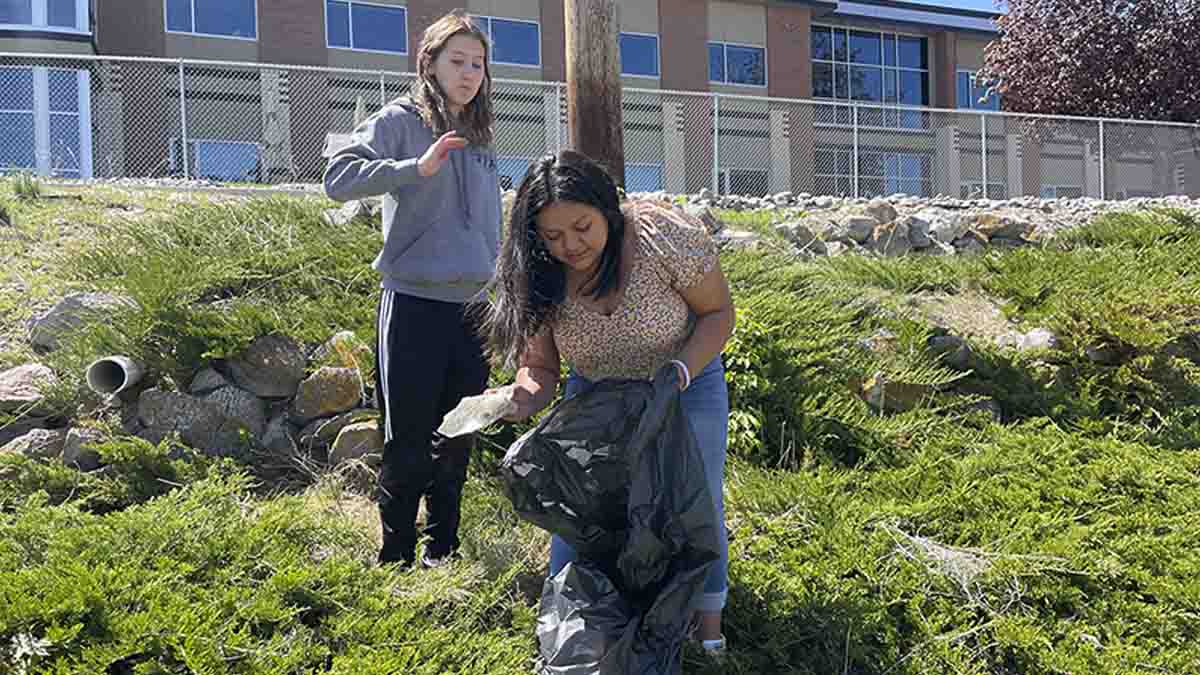
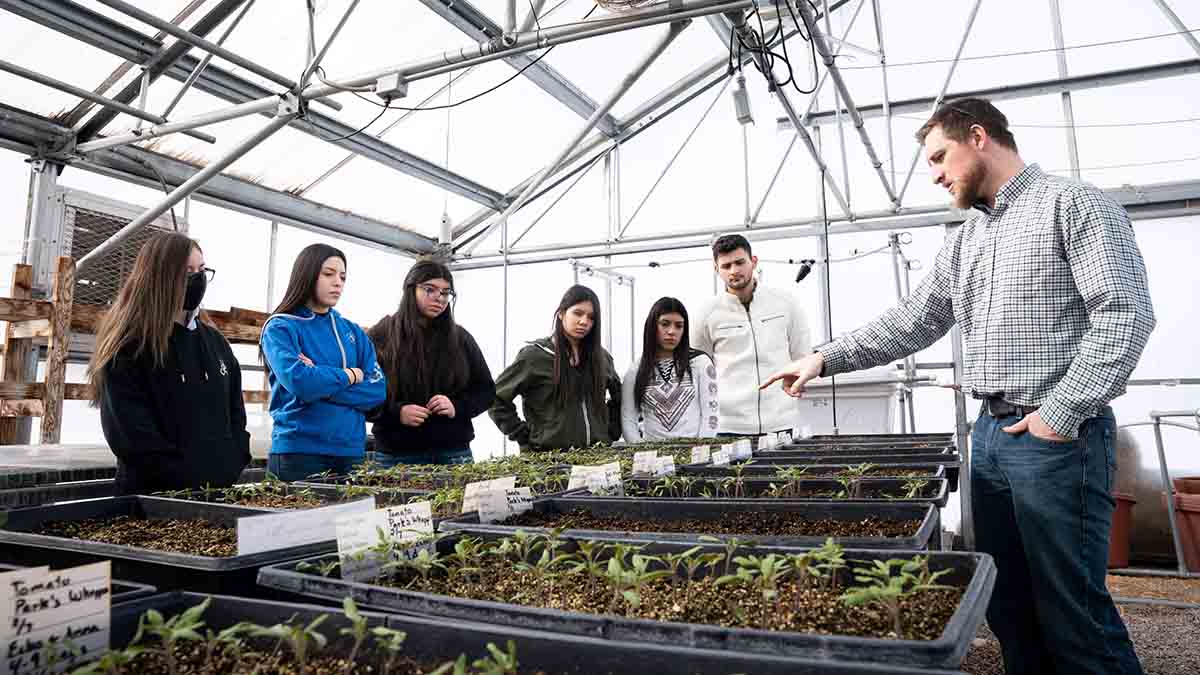
Learning to Serve
AFHS agriculture students have come to the aid of Power County Hospital’s groundskeepers several times throughout the past three years.
The high school requires agriculture students to join the youth agricultural-based career-development and leadership organization FFA, and such community service projects count toward membership requirements. Through their service, classes also learn relevant course concepts.
On that recent morning at the hospital grounds, late in the 2022-23 school year, a student approached Kindall holding an uprooted plant, which the teacher identified as bulbous bluegrass. As a class project, Beitia’s honors ag biology students must collect and correctly identify 40 plant species.
“They start to notice the vast diversity of plants that are actually out there,” Kindall said.
Through the hospital project, students have learned how living roots prevent erosion as they’ve vegetated a barren hillside. They’ve landscaped with native shrubs and grasses, growing the starts from seed donated by the U of I Aberdeen Research and Extension Center. They’ve learned horticulture by producing vegetable starts — some of which they gave to residents of the hospital’s long-term care facility, who are growing them in personal planters.
Kindall was raised in Cambridge — a farming town of 300 in which almost every student enrolled in agriculture classes. During his senior year, Kindall’s agriculture teacher implored him to pursue a career as an agriculture teacher. Nowadays, Kindall often finds himself on the other end of that conversation, urging his own students to study agriculture education. He assures them the job is difficult but rewarding to those who value shaping lives.
“Not everybody is cut out to be a teacher, but you’ve got to really find those right students and really encourage the ones that should be going into teaching careers to go into it,” Kindall said.
Stroebel was raised in Kuna and was also encouraged to enter the field by her teachers. She has watched students blossom in her agriculture classes. The long hours are a tradeoff. She typically arrives at work at 6:45 a.m. and heads home after 5:30 p.m., after helping students prepare for any number of FFA contests. She’s often on the road during weekends, taking students to various competitions.
“On a day-to-day basis it can feel overwhelming, and I think that’s part of why we don’t have as many people going into agricultural education,” Stroebel said.
Researching Turnover
After a few years on the job, some agriculture teachers reach a tipping point when long work hours and rigorous job requirements for a relatively modest salary begin to outweigh the benefits.
Dan Billington, who now works as an agriculture teacher in Castleford, concluded in a paper he authored in 2018 as a U of I graduate student that the tipping point is the primary reason why agriculture teachers leave the field. Billington, who worked on the project under Kattlyn Wolf, interim head of the Department of Agricultural Education, Leadership and Communications, based his findings on interviews of about 10 Idaho agriculture teachers who had left the field. Billington found many of the teachers who walked away from the profession also lacked an adequate support system — especially those who came from expedited, alternative certification programs.
A year later, graduate student Ryanna Meacham, working under Kasee Smith, an associate professor in the department, published survey results from agriculture teachers who stayed in the profession. They agreed the job of an agriculture teacher is stressful and demanding, but they emphasized that the career offers an unparalleled opportunity to help students reach their potential.
Agriculture teachers often have the same students over multiple years, and they emphasize personal growth of students, teaching according to a “three-circle model” comprising classroom and laboratory instruction, leadership development and experiential learning.
“Being able to take those raw pieces of clay that are adolescents and form them into someone that’s going to change the world is a heady tonic in some ways, and we really get to do that I think more than almost any other teaching profession,” Wolf said.
A combined paper incorporating the findings of both graduate students’ surveys is under review for future publication in the “Journal of Agricultural Education.”
U of I agricultural educators tend to enjoy long careers in the field. Among the U of I program’s class of 2020, for example, 12 of 14 graduates are still teaching in high school classrooms.
Wolf attributes her program’s strong retention to the support graduates continue to receive, both from their former classmates and her department. Wolf has records detailing the work history of every program graduate dating back several years, and she keeps in touch with them. She encourages graduates to pursue advanced degrees, thereby improving their standing on the salary scale. She also contacts top graduates when she’s in need of a good classroom for placing student teachers.
Aside from boosting teacher wages — a recent point of emphasis within the Idaho Legislature — Wolf advocates for greater investment in scholarships for agriculture education students and providing “more opportunities for students to see themselves in a college environment.” For example, the Idaho State FFA Career Development Events and Idaho 4-H State Teen Association Convention bring hundreds of prospective students to the U of I campus in Moscow each summer, familiarizing them with higher education.
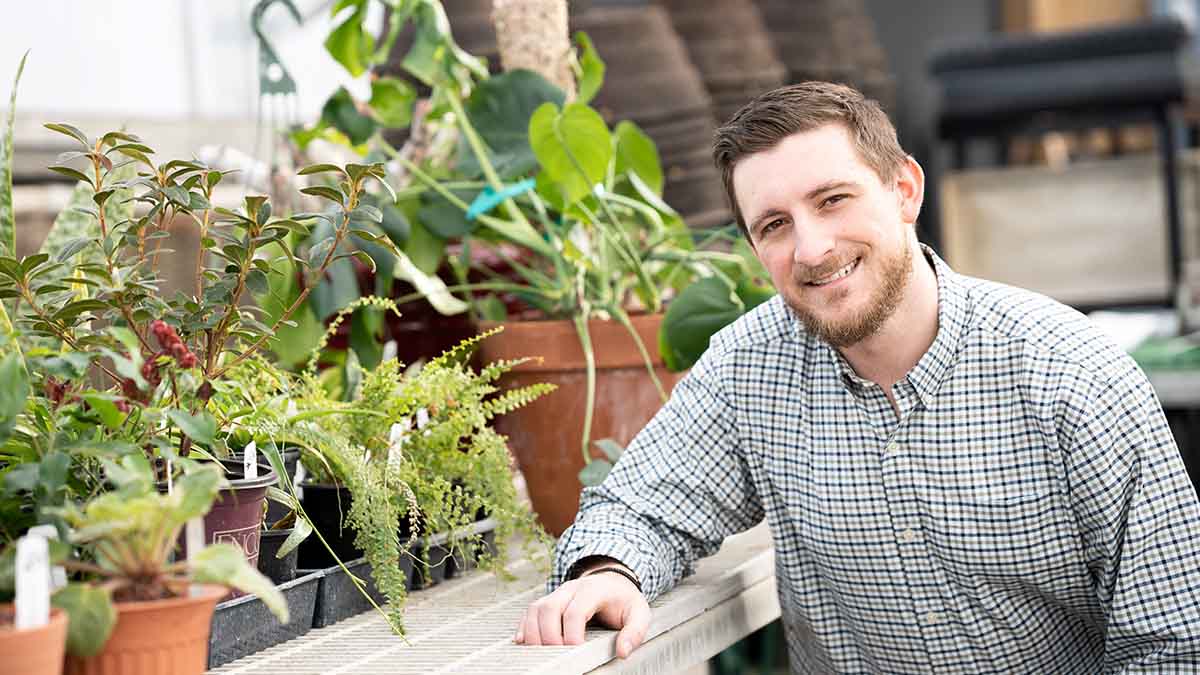
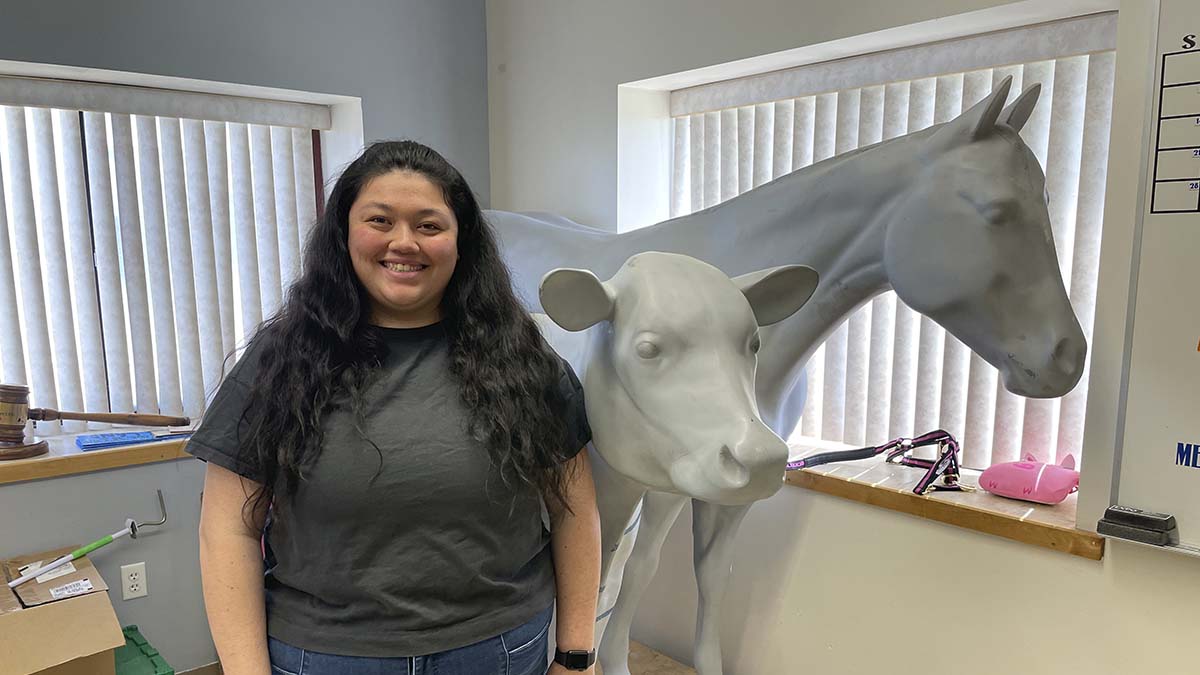
Starting From Scratch
There’s usually a waiting list for Kya Vines Bideganeta’s agricultural classes at Mountain Home High School (MHHS). One freshman class recently had 50 students register for 25 open seats.
“My program is bursting at the seams. I have been working with my district to add a second teacher,” said Bideganeta, a 2013 U of I graduate. “I have such a hard time turning away kids who want to be there.”
There were no agriculture classes at MHHS when Bideganeta attended the school. She took it upon herself to create the wildly popular program after returning home to teach in 2017, convinced agriculture classes help students evolve as leaders and communicators while teaching them life skills.
“I wanted to bring what I knew our community so desperately needed for the young people,” she said.
Bideganeta taught for three years with the West Ada School District, which employed about a dozen agriculture teachers, before joining MHHS, where she established an agricultural welding course. She soon added animal science courses covering zoology, fish and wildlife and livestock production. In 2018, she received a grant for a greenhouse, which she erected with help from the community and her senior welding class.
Last semester, she hosted a U of I student teacher. She’s also inspired some of her students to pursue a career in agricultural education. One former student is in the third year of agriculture education courses at U of I.
Bideganeta emphasizes the importance of self-care and maintaining a healthy work-life balance to students mulling the possibility of becoming an agriculture teacher.
“Many of my colleagues feel like they’re failing at their job and failing their families because they’re spread too thin, and they’re thinking about leaving teaching every day,” Bideganeta said.
She also warns that teaching isn’t a good fit for those who are motivated primarily by income potential.
“I’m showing students jobs they don’t have to go to college to get and they can make more money than me,” she said.
For all job’s challenges, there’s a reason why NAAE chose as its tagline, “Are you ready for the best career ever?”
NAAE’s National Teach Agriculture campaign has sought to recruit and retain good agriculture teachers and celebrate the contributions they make toward their schools and communities. The organization produces reports highlighting where individual states should focus their recruiting efforts for agriculture teachers. The program also distributes funds to states to apply toward their agricultural teacher retention efforts.
The good news is annual retention among agriculture educators is on the upswing nationally, reaching 94% for the 2021-22 school year. Idaho beat the national average that year, with just six of 162 agriculture teachers leaving the classroom prior to the fall semester — good for better than a 96% retention rate.
U of I produced nine agricultural education graduates this spring and is projected to graduate 10 agricultural teachers in 2024 and 11 agricultural teachers in 2025.
“I love what I do and I love providing opportunities for my students and my community, and I know I’ve made a positive impact, and that rewards me like money doesn’t,” Bideganeta said.
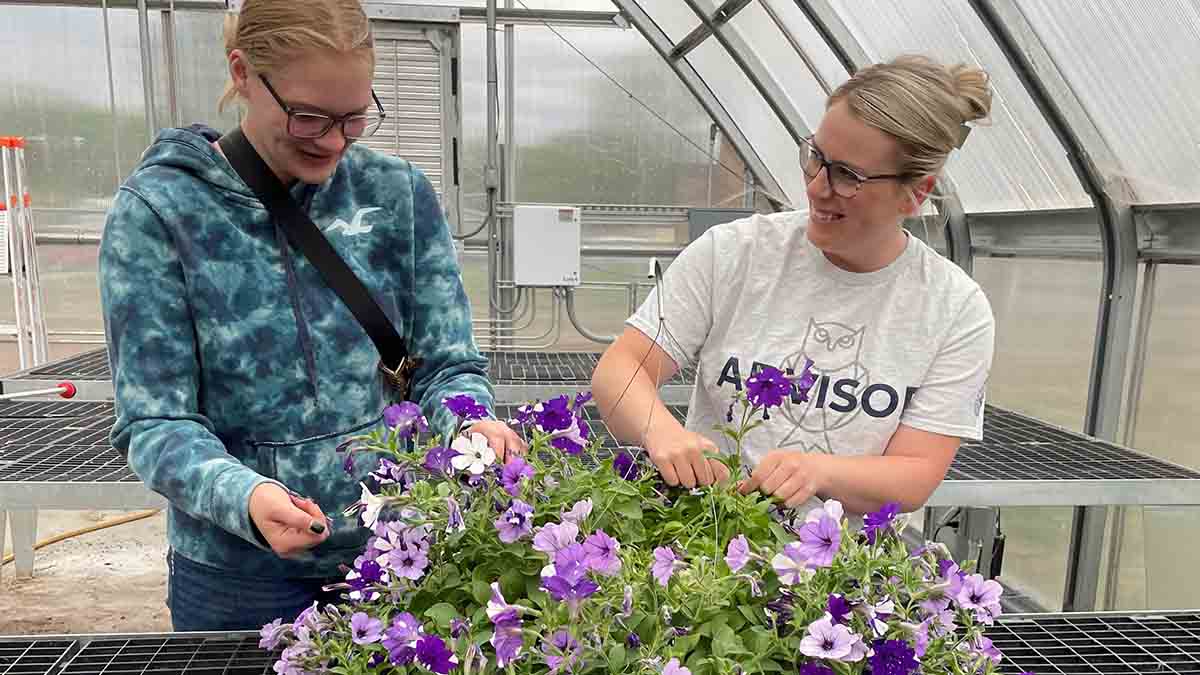
Article by John O’Connell, College of Agricultural and Life Sciences
Photos by Garrett Britton, University of Idaho Visual Productions and John O’Connell, College of Agricultural and Life Sciences
Published in August 2023











